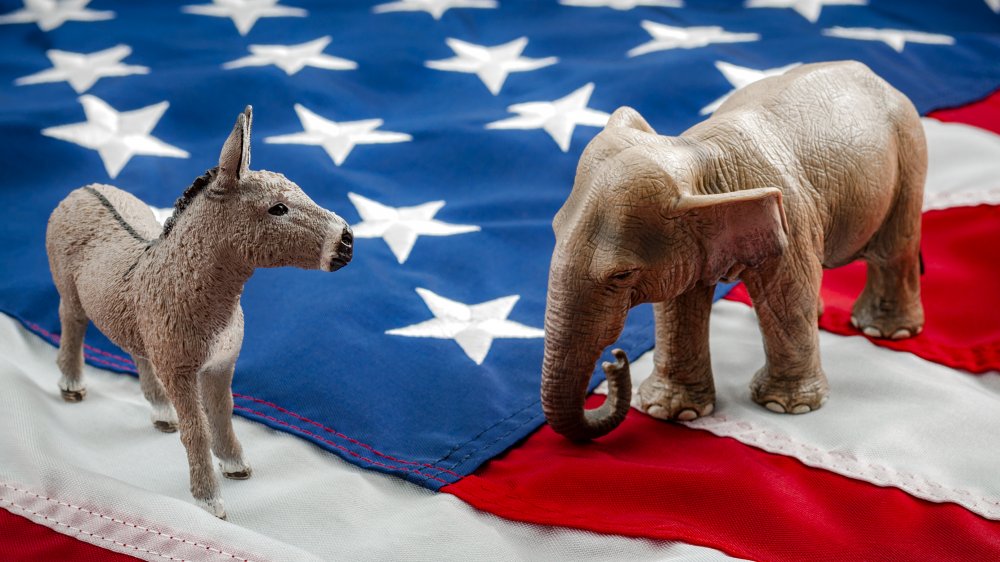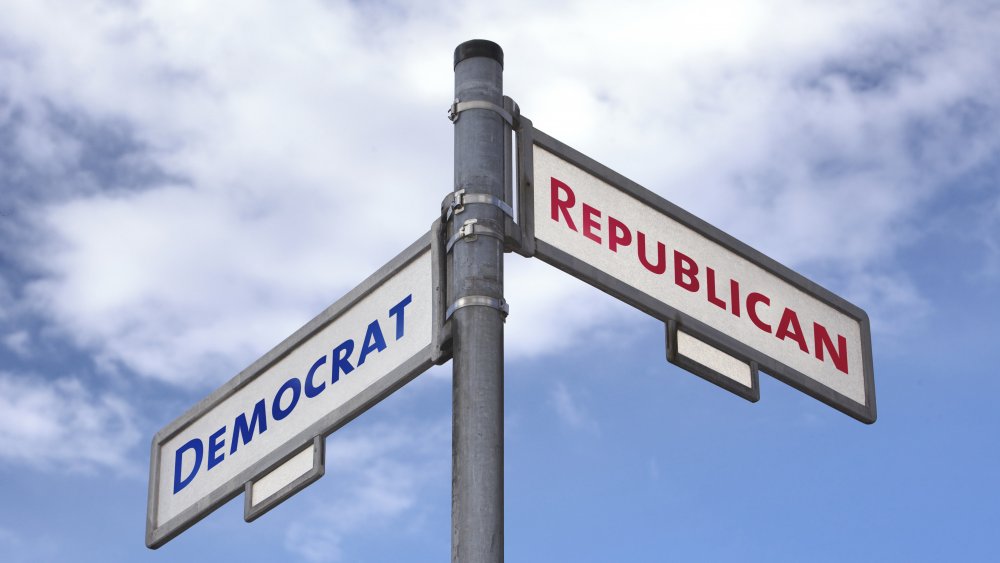Why Does The U.S. Only Have Two Major Political Parties?
As anyone who has sat through a Thanksgiving dinner with two vocal uncles from opposite ends of the political spectrum can readily attest, politics can be divisive, and party lines are not easily crossed. Still, at least it tends to be a tug-of-war between the Republicans and the Democrats. Canada has an ever-changing lineup of strong third parties challenging their two main parties, Liberal and Conservative. Greece has 11 more or less major parties vying for the voter's attention.
Sure, the U.S. also has a whole host of political parties you've never heard of, but ... well, their relative invisibility sort of speaks volumes. For most intents and purposes, politics in the U.S. is a two-horse race. Like all politics, whether this is a good thing or a bad thing obviously depends on the voter. Still, have you ever wondered why things are the way they are? Why does the U.S. only have two major political parties?
The election system writes the plot
The two-party system is pretty much self-sustaining at this point, it appears. In an article for the Conversation, Alexander Cohen, Assistant Professor of Political Science in Clarkson University, has explained that despite an estimated 57 percent of people being dissatisfied with the two major parties, it's unlikely that they'll go away in a hurry.
Cohen recognizes several recent events that have dealt blows to the current party system. There's Donald Trump's rise to the presidency by "upending" the Republican system. There's "Democratic Socialist" Bernie Sanders and his surprising popularity within the Democrats, and the public's deep, historic distrust of the government and the Congress. He also doesn't believe that any amount of political turmoil will be enough to end the two-party system, however, thanks to one simple thing: the way the U.S. elects its leaders.
Thanks to America's "single member district plurality" voting system, there are tons of elections of varying size, all of which produce a single winner. Since voters tend to go for the candidate they like the most and who they feel has a decent chance of getting elected, and the parties try for broad appeal, this means that the electable candidates are nearly always Democrats or Republicans — even if a third-party candidate might actually be closer to the voter's preferences. As a result, appealing candidates and financial backers also gravitate toward the two major parties.

